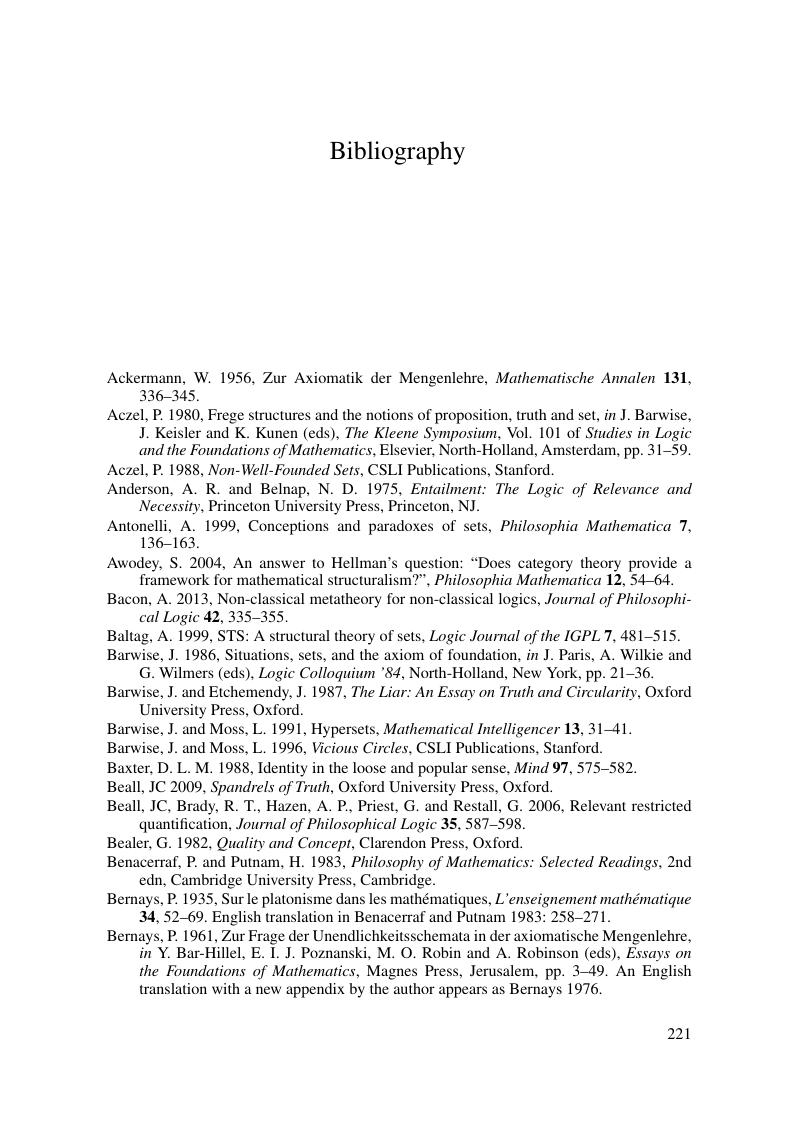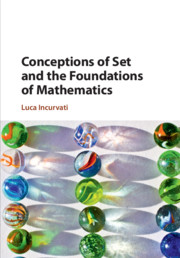Book contents
- Frontmatter
- Contents
- List of Figures
- List of Tables
- Preface
- 1 Concepts and Conceptions
- 2 The Iterative Conception
- 3 Challenges to the Iterative Conception
- 4 The Naïve Conception
- 5 The Limitation of Size Conception
- 6 The Stratified Conception
- 7 The Graph Conception
- 8 Concluding Remarks
- Bibliography
- Index
- References
Bibliography
Published online by Cambridge University Press: 09 January 2020
- Frontmatter
- Contents
- List of Figures
- List of Tables
- Preface
- 1 Concepts and Conceptions
- 2 The Iterative Conception
- 3 Challenges to the Iterative Conception
- 4 The Naïve Conception
- 5 The Limitation of Size Conception
- 6 The Stratified Conception
- 7 The Graph Conception
- 8 Concluding Remarks
- Bibliography
- Index
- References
Summary

- Type
- Chapter
- Information
- Conceptions of Set and the Foundations of Mathematics , pp. 221 - 232Publisher: Cambridge University PressPrint publication year: 2020



